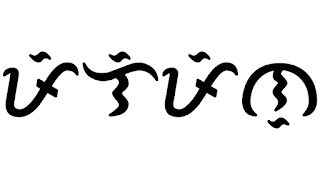I’m a 1.5 generation Filipino immigrant — I left the Philippines at 9 years old and grew up in the United States.
The Philippines is home to over 175 ethnolinguistic groups, each with its own language, culture, and history. Below is a more detailed look at the major groups, including where they live and approximate population sizes.
Luzon
- Tagalog (~28–30 million) – Central & Southern Luzon, Metro Manila, Mindoro
- Ilocano (~9–10 million) – Northern Luzon, Ilocos, Cordillera, migrants in Mindanao
- Kapampangan (~2.9 million) – Pampanga, Tarlac, parts of Bulacan, Bataan
- Pangasinan (~1.5–1.8 million) – Pangasinan Province
- Bicolano (Central Bikol) (~4–5 million) – Bicol Region
- Ibanag (~500,000) – Cagayan Valley
- Ivatan (~30,000) – Batanes Islands
- Ifugao (~180,000) – Ifugao Province
- Kankanaey (~250,000) – Benguet, Mountain Province
- Isneg (Isnag) (~30,000) – Apayao
- Itawes (~120,000) – Cagayan Valley
- Gaddang (~110,000) – Nueva Vizcaya, Cagayan Valley
- Kalinga (~120,000) – Kalinga Province
- Agta/Aeta (various groups) (~50,000–70,000) – Zambales, Pampanga, Bataan, Quezon
Visayas
- Cebuano (Bisaya) (~22–25 million) – Cebu, Bohol, Negros Oriental, Leyte, Mindanao migrants
- Hiligaynon (Ilonggo) (~9–10 million) – Iloilo, Negros Occidental, Capiz, parts of Mindanao
- Waray-Waray (~3.1 million) – Samar, Leyte
- Aklanon (~500,000) – Aklan
- Karay-a (~500,000) – Antique, parts of Iloilo
- Capiznon (~600,000) – Capiz
- Cuyonon (~180,000) – Palawan, Cuyo Islands
- Kinaray-a (~500,000) – Panay Island
Mindanao
- Maguindanaoan (~1.4 million) – Maguindanao Province
- Maranao (~1.4 million) – Lanao del Sur, Lanao del Norte
- Tausug (~1.1 million) – Sulu, Basilan, Zamboanga City
- Sama-Bajau (~500,000) – Sulu Archipelago, Tawi-Tawi, coastal Mindanao
- Subanen (~450,000) – Zamboanga Peninsula
- Manobo (various subgroups) (~1.1 million combined) – Agusan, Bukidnon, Cotabato, Davao regions
- Bagobo (~250,000) – Davao region
- T’boli (~150,000) – South Cotabato
- Mandaya (~200,000) – Davao Oriental
- Higaonon (~120,000) – Bukidnon, Agusan del Norte
- Bukidnon (Binukid) (~120,000) – Bukidnon Province
- Bilaan (Blaan) (~150,000) – South Cotabato, Sarangani
Palawan & Other Groups
- Palaw’an (~50,000) – Southern Palawan
- Molbog (~15,000) – Southern Palawan
- Batak (~3,000) – Northern Palawan
- Tagbanwa (~25,000) – Palawan interior
Negrito Groups
- Aeta (Agta, Ayta) (~50,000) – Zambales, Pampanga, Tarlac, Bataan
- Ati (~20,000) – Panay, Negros
- Agta-Dumagat (~15,000) – Quezon, Aurora, Rizal
- Mamanwa (~12,000) – Surigao, Agusan del Norte
Note: Numbers are approximate and overlap due to migration, intermarriage, and language shift. Some groups speak the national language Filipino (based on Tagalog) as a second or first language today.
Join the Conversation
Are you a first generation, second generation, or 1.5 generation Filipino living abroad? You're invited to be part of the conversation and contribute to the growing voice of the Filipino diaspora.
👉 Join the blog and share your story, memories, or insights about Filipino identity, language, culture, or history!













0 Comments